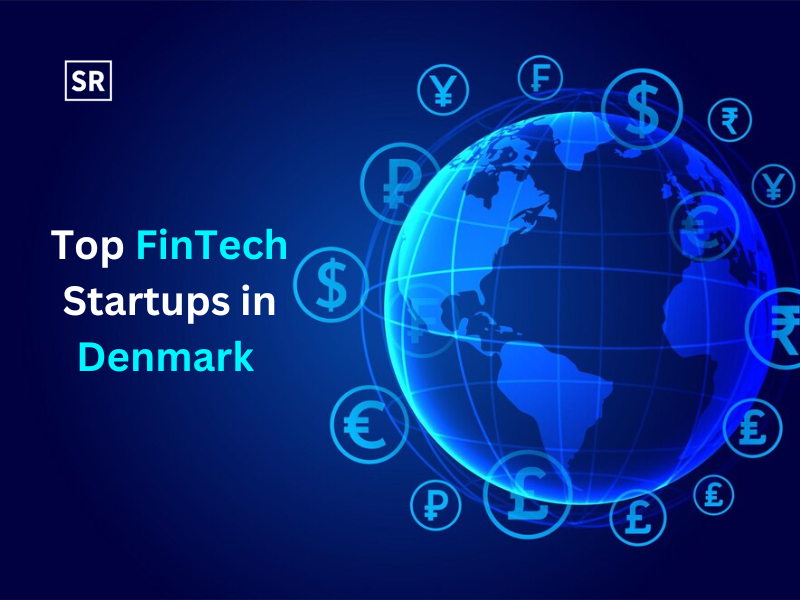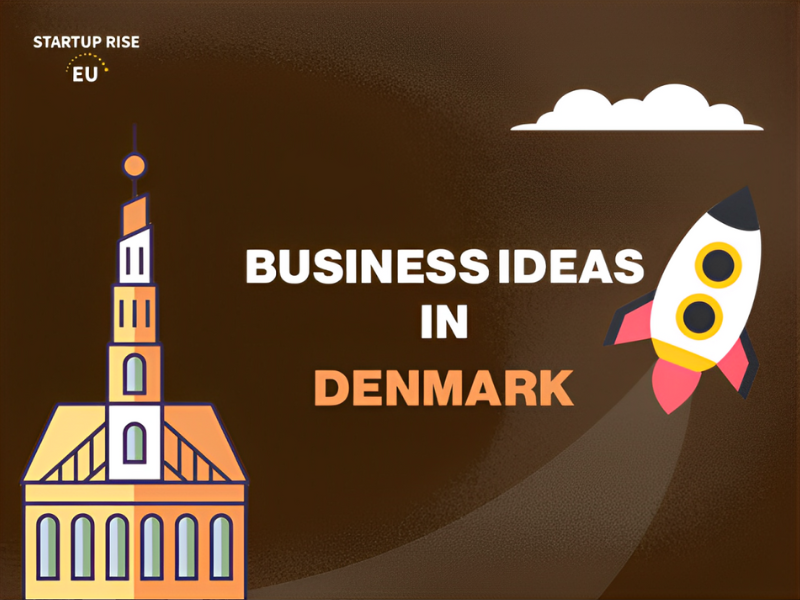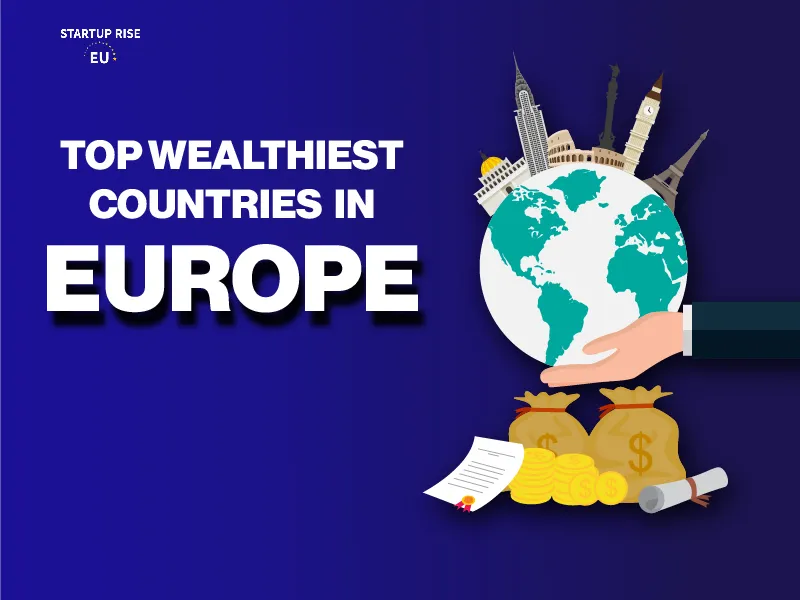
SUMMARY
- In this article, we will explore the 20 wealthiest countries in Europe in 2024 based on GDP per capita. GDP per capita reflects the standard of living within a country.
- Even after world wars and severe financial crises, most European countries have overcome these challenges and focus on creating a satisfactory lifestyle for their citizens.
The richest countries in Europe have strong economies, high income per person (GDP per capita), and very good living conditions. Luxembourg is the wealthiest, thanks to its strong banking industry and low taxes. Switzerland is next, known for its banks, advanced industries and stable government. Norway is rich because of its oil and gas resources, which are carefully managed to support public services.
Ireland has grown quickly due to foreign companies investing in its tech and medicine sectors. Germany is the biggest economy in Europe, stays wealthy through its strong factories and exports. These countries are successful because they manage their economies well, encourage new ideas, and compete globally.

Richest European Countries 2025
Here is a list of the richest countries in Europe in 2025, ranked on the basis of GDP per capita.
Luxembourg
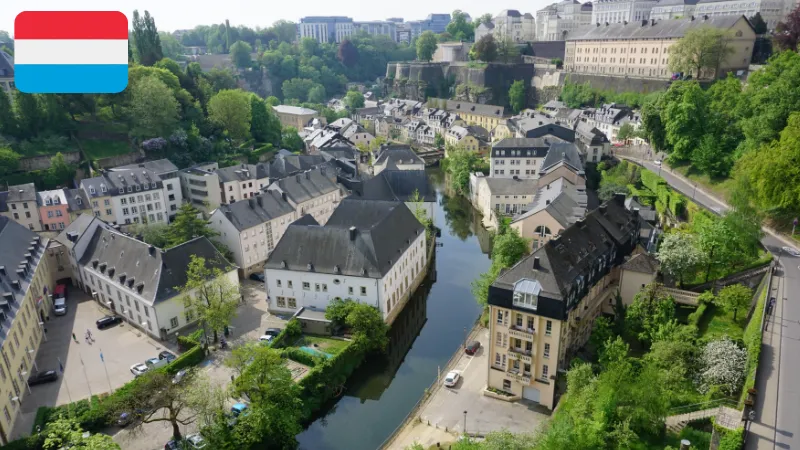
Luxembourg has a population of 658,300 and a GDP per capita of $131,380 in 2025. It is located in the heart of Europe, the country uses its wealth to provide the finest housing, healthcare, and education, resulting in one of the highest standards of living in the Eurozone.
Luxembourg's economy relies heavily on the banking, steel, and industrial sectors, it mirrors Germany's economic structure. Luxembourg’s citizens enjoy the world's highest GDP per capita. Luxembourg is a highly industrialised and export-intensive region.
The country has consistently maintained a GDP per capita of over $100,000 since 2014 and prioritises improving living standards, healthcare, and education. Luxembourg is a popular tourist destination renowned for its palaces, green spaces, and canals. It provides free public transport and has one of the highest minimum wages globally. Luxembourg is the wealthiest country in Europe.
Ireland

Ireland has a population of 5,089,478 and a per capita GDP of $106,060. Ireland is one of the largest corporate tax havens globally, attracting multinationals such as Apple, Google and Microsoft, which have contributed more than 50% of the Irish economy in recent years. Ireland underwent significant reforms in its banking industry following the 2008 financial crisis, which also included cutting public sector wages.
Despite its success in recovering from the financial crisis and boosting employment, Ireland's status as a corporate tax haven primarily benefits multinationals rather than the average citizen. Many large US companies moved their financial residence to Ireland to take advantage of its low 12.5% corporate tax rate by the mid-2010s .
Now these multinational companies accounted for more than 50% of the Irish economy. However, if Holafly's esim adopts the OECD's proposed 15% minimum corporate tax rate, it may lose this competitive edge.
While Irish families are better off than before, national household per capita disposable income is slightly below the EU average. There is also a significant income gap between the richest and poorest people, with the top 20% earning almost five times as much as the bottom 20%.
Despite a high GDP per capita, most Irish citizens do not consider themselves among the richest people in the world. Still Ireland is one of the richest countries in Europe by GDP.
Switzerland
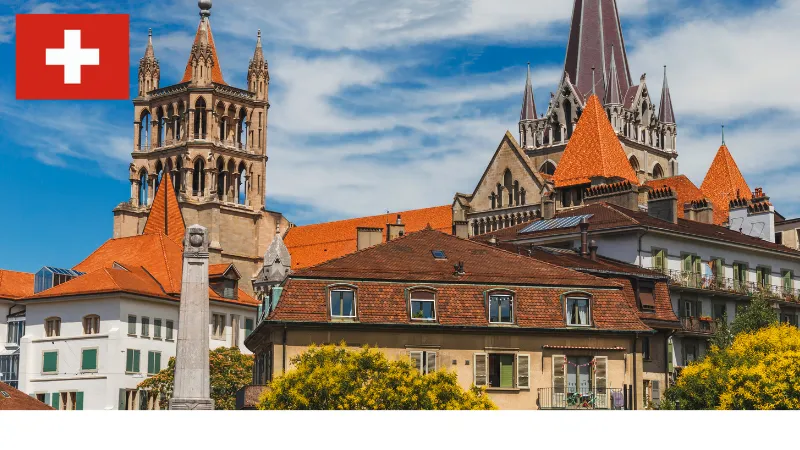
Switzerland is one of the world's most advanced free market economies. Its GDP per capita is $105,670, and its population is approximately 8.85 million. Switzerland's social security system is strong and efficient, with social expenditures accounting for about a quarter of a percent of GDP.
Some famous Swiss inventions include white chocolate, the bobsled, the Swiss Army knife, the computer mouse, the immersion blender, Velcro, and LSD.Most of Switzerland's wealth comes from banking, insurance, tourism, and exports of pharmaceuticals, gemstones, precious metals, precision instruments such as watches, and machinery such as medical equipment and computers.
Most Swiss businesses are small or medium-sized, with over 99% employing fewer than 250 people. Switzerland has one of the lowest VAT rates in Europe. The country spends about 3% of its GDP annually on research and development, with the private sector funding more than two-thirds of this amount. It is among the top richest countries in Europe per capita.
Norway
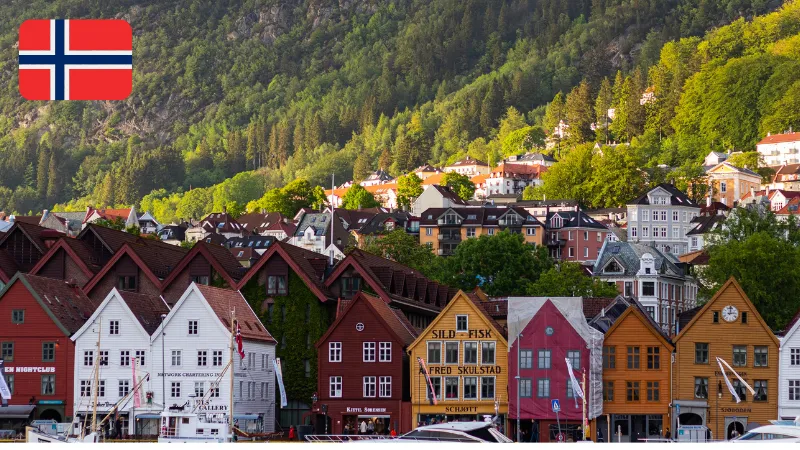
Norway's GDP per capita in 2024 is $94,660, making it one of the highest globally. With a population of 5.49 million, Norway's prosperity is evident in its excellent infrastructure, high standard of living, and comprehensive welfare system, which includes universal healthcare and education.
Norway's economic rise began in the late 1960s when significant oil reserves were discovered in the North Sea. This transformed its economy, catapulting it to the top of global wealth rankings. The government managed its oil wealth by creating the Government Pension Fund Global, also known as the Norwegian Oil Fund, in 1990.
This sovereign wealth fund, which had over $1.3 trillion in assets as of 2022, helps ensure Norway's financial stability and fund a variety of social programs. Beyond oil, Norway has a diversified economy with strong maritime shipping, renewable energy, and technology sectors.
The country consistently ranks high in economic competitiveness, innovation, and quality of life. Norway is also committed to sustainability, leading in renewable energy and hydropower providing a significant portion of its electricity.
Norway's economic success is marked by prudent resource management, a diversified economy, high living standards, and a strong focus on sustainability, making it one of Europe's wealthiest countries. The economy suffered in early 2020 when oil prices plummeted and the global pandemic struck, causing Norway's GDP to decline by 6.3% in the second quarter. However, the economy gradually recovered.
Norway's $1.4 trillion sovereign wealth fund, the world's largest, provides a safety net during economic challenges. Unlike many other wealthy countries, Norway has a low income inequality gap, and its high GDP per capita reflects the economic well-being of the average person.
Iceland

In recent years, Iceland's economy has grown due to the service sector, especially tourism, software production, and biotechnology. Iceland has become a hub for companies specialising in computers and software and has many call centres. Tourism is also recovering well.
Iceland's economy is small and highly volatile. With a population of 376,500, its GDP per capita is $84,590. Services contribute more than 60% of Iceland's GDP and employ more than 75% of its workers. Tourism accounts for more than 5% of Iceland's GDP.
Iceland's economy is mixed, with a high degree of free trade and some government intervention, although government consumption is low compared to other Nordic countries.
The main source of electricity for homes and industry is hydropower. In the 1990s, Iceland implemented extensive free market reforms, leading to strong economic growth. This gave Iceland one of the most economic and civil freedoms in the world. In 2007, Iceland topped the Human Development Index and was one of the most egalitarian countries.
Denmark
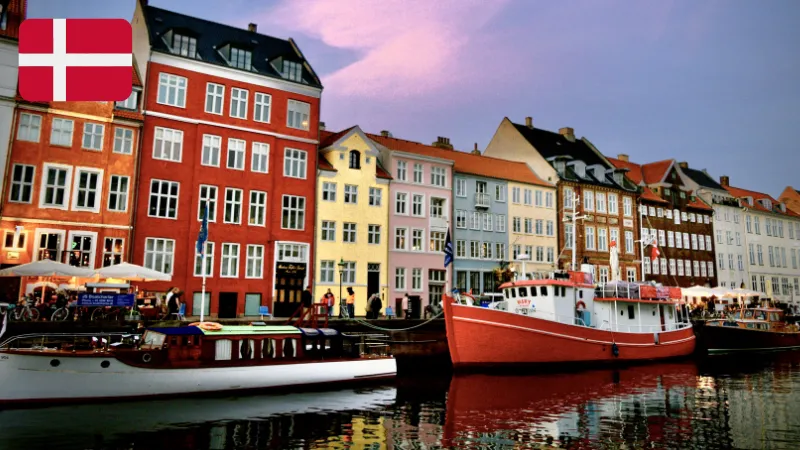
The economy of Denmark is a modern, high-income, and highly developed mixed economy. In 2025, Denmark had a gross national income per capita of $68,900, the ninth highest in the world. Income distribution is relatively equal, although inequality has grown in recent decades. With a population of 5,939,695 in 2025, Denmark is one of the world's top 50 largest economies by GDP.
Denmark has an efficient and strong social security system, with social expenditure accounting for more than a quarter of GDP. The country follows a fixed exchange rate system, maintaining the Danish krone, which is pegged to the euro. Despite being eligible to join the European Union's Economic and Monetary Union, Danish voters refused to adopt the euro in a 2000 referendum.
Denmark invests heavily in active labour market policies, and the concept of flexibility is important. The Nordic model characterises Denmark, in which high taxes finance extensive government services such as healthcare, child care, and education. Income transfers are also made to retirees, people with disabilities, the unemployed, and students.
Netherlands
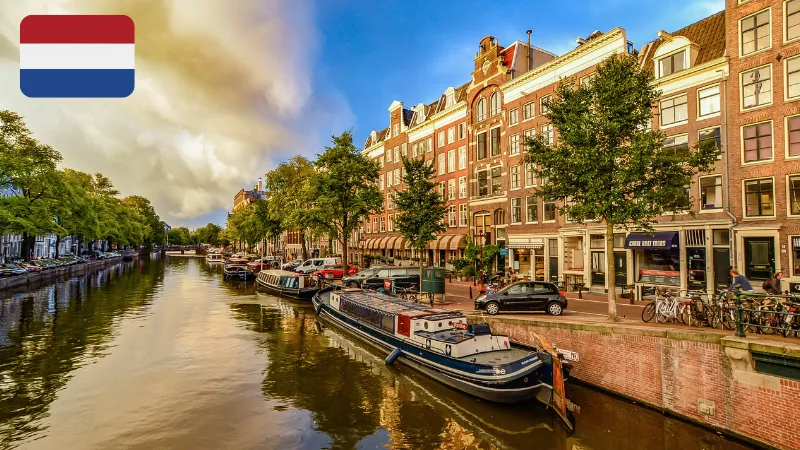
The Netherlands is one of Europe's wealthiest countries, with a strong economy and a high standard of living. It has a GDP per capita of $63,750 and a population of 17,671,125. Its economic journey began centuries ago, benefiting from its strategic location for trade.
During the Dutch Golden Age, the Netherlands became an economic powerhouse thanks to innovations in maritime trade, banking, and industries such as shipbuilding and textiles.
Today, the Netherlands maintains its strong economy through diverse sectors. Its GDP consistently ranks among Europe's top performers, showing resilience even during global economic challenges. Major industries include agriculture, manufacturing, technology, and financial services.
The Netherlands is a global leader in agricultural exports, especially in horticultural and dairy products. The Port of Rotterdam, one of the world's largest ports, plays a key role in its trade dominance.
The Dutch economy is also known for its innovation and entrepreneurship. The capital Amsterdam is a hub for startups and tech companies, attracting investment and promoting innovation. Government support for research and development enhances its competitive edge.
The Netherlands has a very high standard of living, with excellent healthcare, education and infrastructure. Its social policies promote inclusiveness and well-being, contributing to a high quality of life for its citizens. The Netherlands' economic prosperity is marked by innovation, trade and flexibility. Today, it thrives as one of Europe's richest countries, blending tradition and modernity in its economic landscape.
San Marino
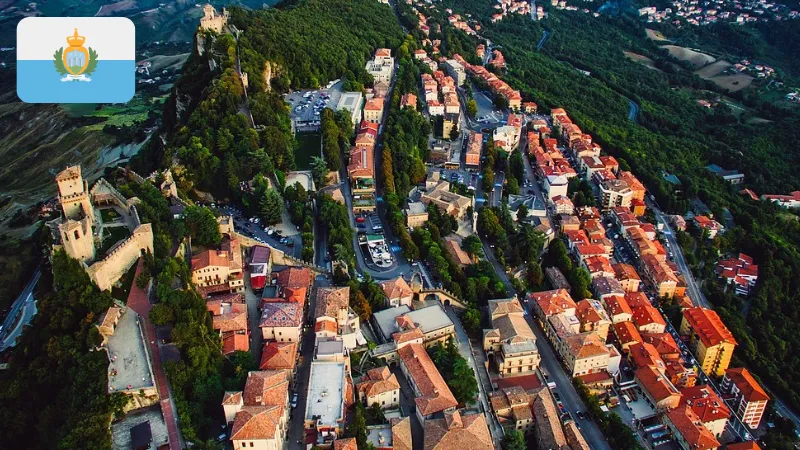
San Marino, Europe's oldest republic and fifth smallest country, has a population of just 33,617 but is one of the world's wealthiest countries with a GDP per capita of $59,410. Income tax rates are very low, about a third of the EU average. Despite this, San Marino is working to bring its financial laws into line with EU and international standards.
During and after the pandemic, the country showed remarkable resilience despite tight monetary conditions and an energy crisis. Its tourism and manufacturing sectors performed particularly well.
San Marino has a developed free-market economy centred on tourism, banking, and manufacturing industries such as ceramics, clothing, fabrics, furniture, paint, spirits, tile, and wine. Manufacturing and financial services together contribute more than half of the national GDP.
The contribution of agriculture is small, with wine and cheese being the main products. Additionally, San Marino sells collectible postage stamps to philatelists. It is among the richest countries in Europe by GDP.
Austria
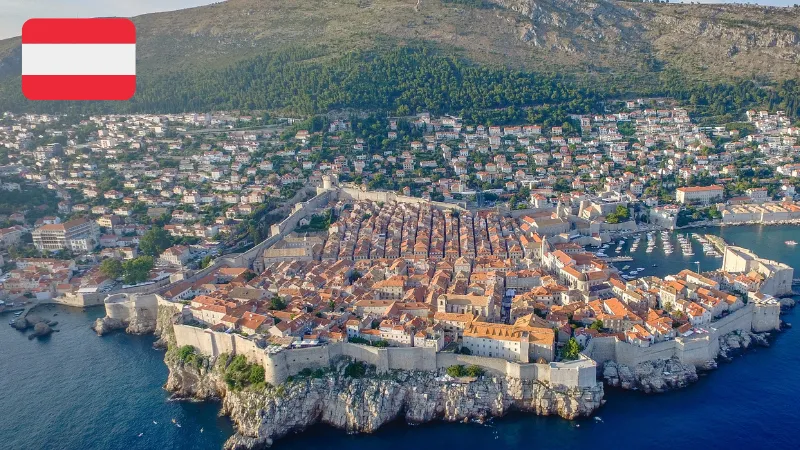
Austria's GDP per capita is over $59,230, reflecting its economic strength. With a population of 8.97 million, Austria's prosperity began in the late 20th century, emerging from post-war challenges to become a major player in the European economy.
Tourism, manufacturing, and services are the main drivers of Austria's economy. The tourism industry attracts millions of visitors each year, contributing significantly to GDP. Austria's manufacturing sector is known for precision engineering and innovation, with key industries such as automotive, machinery, and electronics driving exports and revenue.
Austria's commitment to education and skilled labour has been key to its success. The country has a highly educated workforce and invests heavily in research and development, fostering global competitiveness. In recent years, Austria has focused on renewable energy and sustainability initiatives, increasing its economic resilience and environmental protection.
The expansion of renewable energy sources and energy-efficient technologies has established Austria as a leader in green innovation in Europe. It is among the richest countries in Europe per capita.
Austria's strategic location in the centre of Europe facilitates trade and investment, which contributes to its economic stability and growth. Overall, Austria's economic strength, focus on innovation, sustainability, and skilled labour reinforce its position as one of Europe's wealthiest and most dynamic countries.
Sweden
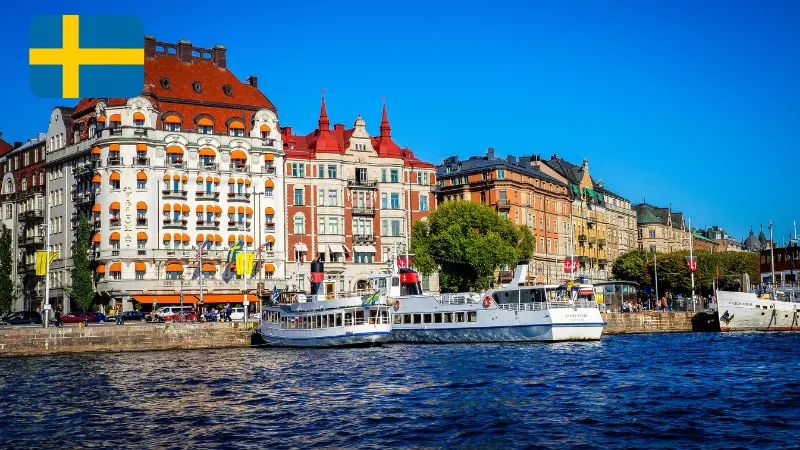
Sweden, a Nordic powerhouse, is one of Europe's wealthiest countries, with a strong economy and a high standard of living. In 2022, Sweden had a GDP per capita of $58,530 and a population of 10.64 million.
Sweden's economic success comes from diverse industries such as manufacturing, services, and technology. Well-known Swedish companies such as Volvo, IKEA, and Ericsson contribute significantly to the economy. The country also has a strong welfare system that provides free healthcare and education.
Sweden's innovation-driven economy allocates a significant portion of its budget to promoting research and development, entrepreneurship, and technological advancement. This focus has led to breakthroughs in renewable energy, biotechnology, and information technology.
Sweden's financial stability is evident in its low unemployment rate. It has a healthy trade balance, which includes machinery, vehicles, and pharmaceuticals.
Sweden also has a high standard of living, which emphasises sustainability and social equality. Its capital, Stockholm, is known for its quality of life, cultural richness, and thriving startup scene. Overall, Sweden's economic resilience, innovation, and commitment to social welfare make it one of Europe's richest and most progressive countries.
- Unicorn Startups in Sweden
- HealthTech Startups in Sweden
- Top Fintech Startups In Sweden
- Top Agritech Startups in Sweden
Belgium
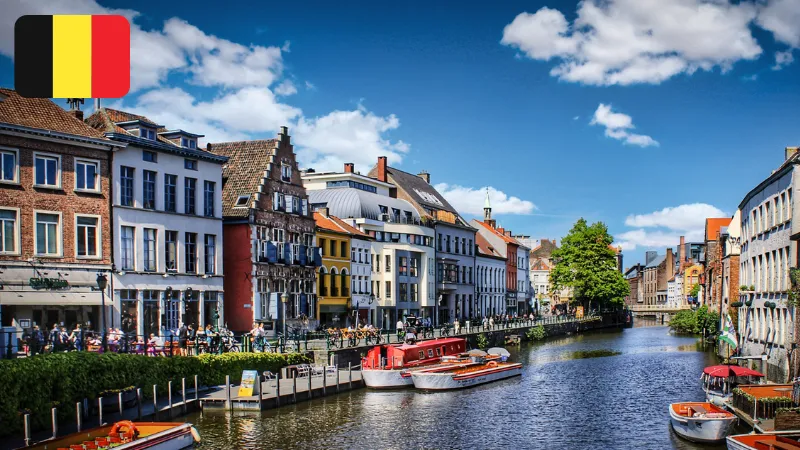
Belgium has a highly developed, high-income mixed economy, with a GDP per capita of $55,540 and a population of 11,715,774. Its central geographic location and well-developed transportation network, including ports such as the Port of Antwerp, canals, railways, and highways, support its diverse industrial and commercial base. Belgium was the first European country to join the Industrial Revolution in the early 19th century.
The economy benefits from a strong social security system, with social expenditure accounting for more than a quarter of GDP. Industry is concentrated mainly in Flanders, Brussels, and the major Walloon cities of Liège and Charleroi. Belgium imports raw materials and semi-finished goods, which are processed and re-exported. The country has few natural resources other than fertile soils; coal is no longer economically viable.
Exports make up more than two-thirds of Belgium's gross national income, making the country heavily dependent on global trade. Belgium's trade advantages come from its central location and highly skilled, multilingual and productive workforce.
As one of the founding members of the European Community, Belgium strongly supports further integration of European economies within the EU. Nearly three-quarters of its trade is with other EU countries. It is one the richest countries in Europe per capita.
Finland
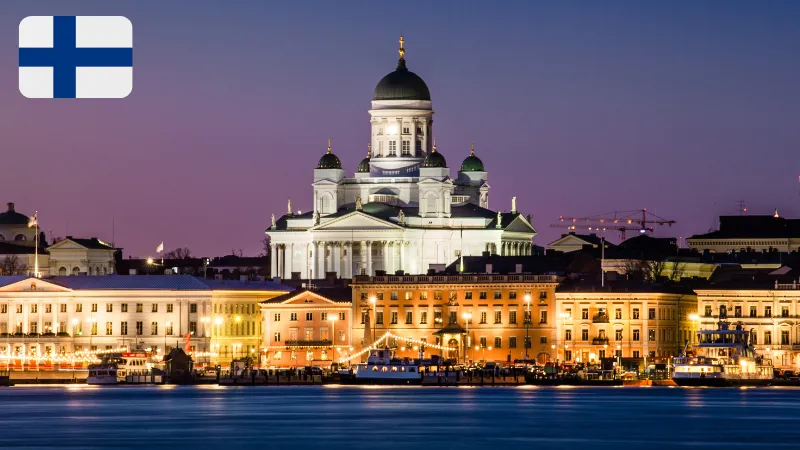
Finland's economy is highly industrialised, mixed, with a GDP per capita of $55,130, comparable to Western European economies such as France, Germany, and the United Kingdom. It has a population of 5,549,886.
The largest sector of Finland's economy is services, followed by manufacturing and the primary sector. Finland has a strong social security system, with social expenditure equal to more than a quarter of GDP. It is among the richest countries in Europe per capita.
Manufacturing is Finland's leading economic sector, with electronics, machinery, vehicles, engineered metal products, forestry, and chemicals being the largest industries. The country has abundant timber, mineral, and freshwater resources. Forestry, paper mills, and agriculture are politically sensitive sectors due to rural concerns.
Finland ranks high in the Global Information Technology Index due to collaboration between the business sector, academia, and government in information and communication technology.
The country is highly integrated into the global economy, with international trade accounting for one-third of GDP. Trade with the European Union accounts for more than fifty percent of total trade. Finland's largest trading partners include Germany, Russia, Sweden, the United Kingdom, the United States, the Netherlands, and China.
Finland is a member of the Eurozone, which sets it apart from the other Nordic countries. It has a history of development without involvement in colonialism, the slave trade, or tax evasion and money laundering.
Germany

Germany ranks among the top global economies, with a GDP per capita of $54,290 and a population of 83.28 million. Its economic strength lies in sectors such as automotive manufacturing, engineering, and technology.
The German economy experienced significant growth after World War II, driven by innovative industries such as pharmaceuticals, renewable energy, and information technology. This growth continued in the late 20th and early 21st centuries, establishing Germany as an economic powerhouse.
A striking feature of Germany is its export-oriented economy, known for high-quality products such as luxury cars, precision machinery, and medical equipment. This export focus has contributed greatly to Germany's wealth and global influence. It is among the richest countries in Europe per capita.
Germany's financial sector, which is centred in Frankfurt, serves as a major European hub with institutions such as the European Central Bank. This underscores Germany's importance in the global financial landscape.
The country's commitment to innovation and research fosters a favourable environment for business development. Germany continually invests in education, technology, and infrastructure to promote economic prosperity.
Beyond economic strength, Germany emphasises social welfare and environmental sustainability. Its healthcare system offers comprehensive coverage, and the country is a leader in renewable energy adoption with ambitious goals to reduce carbon emissions. Overall, Germany's combination of economic strength, innovation, and social responsibility solidifies its status as one of Europe's wealthiest and most influential countries.
Explore New Business Opportunities In Germany.
UK

The United Kingdom has a highly developed social market economy, making it one of the largest national economies. With a population of 67.85 million and a per capita GDP of $51,070, it is one of the most globalised economies, joining England, Scotland, Wales and Northern Ireland. The UK has a strong social security system, which covers about a quarter of its GDP. It is one of the wealthiest countries in Europe.
The services sector dominates, with financial services playing an important role. London is the second largest financial centre globally. The UK also has one of the largest aerospace industries and a significant pharmaceutical industry. North Sea oil and gas production also boosts the economy.
There are significant regional variations in prosperity, with South East England and North East Scotland being the wealthiest regions per capita. London's economy makes it the richest city in Europe by GDP per capita. The UK spends a significant portion of its GDP on advanced research and development.
Britain was the first country to industrialise in the 18th century. The costs of fighting in both world wars weakened its relative position. Despite this decline, the UK has retained significant global influence in the 21st century. Government involvement is primarily through Her Majesty's Treasury and the Department of Trade and Commerce.
France

France is one of Europe's economic powerhouses, with a history of financial stability and innovation. With a population of 64.82 million and a per capita GDP of $47,360, France tops Europe in terms of GDP. The major sectors driving its economy include manufacturing, technology, agriculture and tourism. It is among the richest countries in Europe by GDP.
Paris, the capital, is a global financial centre, home to major banks, multinational corporations and major stock exchanges. France is also famous for its luxury goods industry, including fashion, cosmetics and wine, which contributes significantly to its economic prosperity.
France is actively involved in international trade and investment. As a founding member of the European Union (EU) and a major player in shaping the EU's economic policies, France's membership in the Eurozone has strengthened its economic position while promoting stability and growth.
France's wealth is reflected in its high standard of living, quality health care system, and extensive social welfare programs. These factors make it a desirable destination for businesses, investors and individuals seeking opportunities in Europe's dynamic economic landscape.
- Small Scale Business Ideas in France 2024
- Unicorn Startups in France
- Top HealthTech Startups in France
- Top Fintech Startups in France
Andorra

Andorra has a developed and free market economy driven by finance, retail and tourism. With a population of 80,316 and a GDP per capita of $44,900, it attracts buyers from France and Spain as a free port. Andorra also has popular summer and winter tourist resorts, which employ a significant portion of the domestic labour force.
According to an estimate, approximately 10 million tourists visit every year. Even though Andorra has a relatively small population among other European countries, it is one of the wealthiest countries in Europe by GDP.
There is active trade in consumer goods in Andorra, including duty-free imported goods, making them less expensive than neighbouring countries. This duty-free status affects its relations with the European Union, allowing Andorra to maintain a price differential and offer limited duty-free allowances to visitors.
The election results indicate support for the government's reform initiatives and the belief that some degree of integration with the EU is necessary for continued prosperity. Despite less than 2% of arable land, agriculture was the mainstay of Andorra's economy before tourism grew.
Sheep farming remains the major agricultural activity along with lucrative tobacco growing. Most of Andorra's food is imported.In addition to handicrafts, manufacturing includes cigars, cigarettes and furniture for domestic and export markets.
Malta
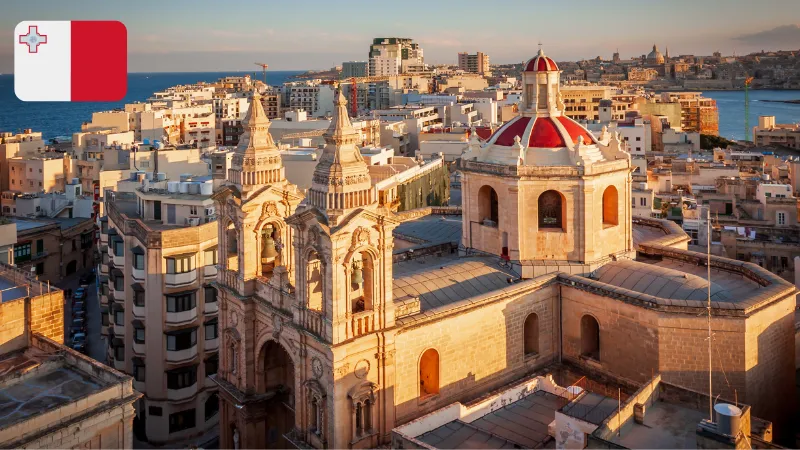
Malta has a highly industrialised, service-based economy with a population of 536,740 and a per capita GDP of $41,740. Classified as an advanced economy by the International Monetary Fund and a high-income country by the World Bank, it is also considered an innovation-driven economy by the World Economic Forum. Malta is a member of the European Union and the Eurozone.
The strengths of Malta's economy include its strategic location in the Mediterranean Sea, its fully developed open market economy, a multilingual population (88% of Maltese people speak English), a productive labour force, low corporate taxes and well-developed finance and ICT sector included. , , The economy depends on foreign trade, manufacturing, tourism and other services in the tertiary sector.
Italy
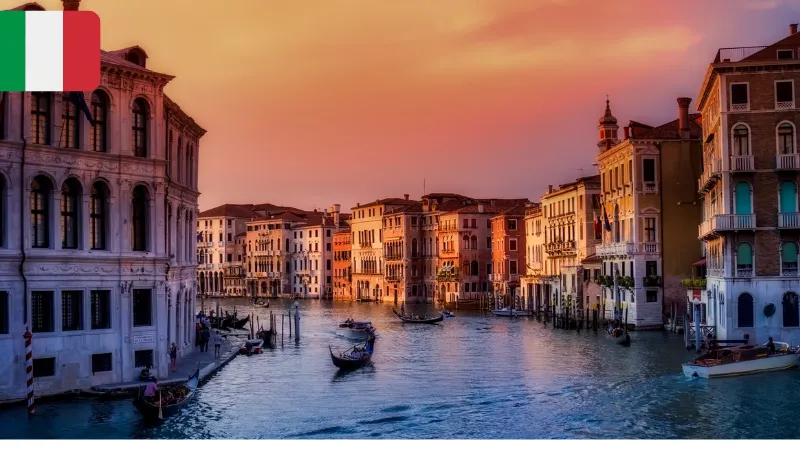
Italy has a highly developed social market economy with a population of 58.79 million and a per capita GDP of $39,580 by 2025. It has one of the largest economies in the European Union and one of the largest manufacturing industries in Europe. Italy is a founding member of the European Union, Eurozone, OECD, G7 and G20. It is also one of the richest countries in europe.
After World War II, Italy transitioned from an agriculture-based economy to one of the world's most advanced countries, becoming a leader in global trade and exports. The country has a very high standard of living and has been rated by The Economist as having the highest quality of life in the world. Italy's private wealth ranks in the top 10 globally, and its social security system accounts for almost a quarter of GDP.
Italy is a major manufacturer and exporter of machinery, vehicles, pharmaceuticals, furniture, food and clothing, maintaining a significant trade surplus. The country is known for its innovative business sector, competitive agriculture (being the world's largest wine producer), and high-quality manufactured goods, including luxury goods. Italy has a strong cooperative sector, with the largest share of the population employed by cooperatives in the European Union.
Cyprus

The economy of Cyprus is a high-income economy classified by the World Bank and recognized as an advanced economy by the International Monetary Fund since 2001. With a population of 1,268,467 and a GDP per capita of $37,150 in 2025, Cyprus has demonstrated resilience and adaptability. It is one of the wealthiest countries in Europe.
Cyprus adopted the euro as its official currency, replacing the Cypriot pound at a fixed exchange rate in 2008. The economy is dominated by the service sector, which has diversified over the past two decades. Tourism remains important but has been overtaken by professional services, communications, financial services and real estate.
Cyprus is an important international business hub and a growing innovation hub. Key sectors include wholesale and retail trade, energy, innovation, interconnectivity, tourism and headquarters. Government initiatives promote competitiveness and green transition through incentives for renewable energy, non-car transport, film production and the wine sector.
Spain

Spain's highly developed social market economy is a member of various international organisations, including the European Union, the Eurozone, the OECD and the WTO. Major economic sectors include automotive, medical technology, chemicals, shipbuilding, tourism and textiles. Spain boasts a strong social security system, covering almost a quarter of GDP.
After a severe recession, Spain experienced strong GDP growth, outpacing the Eurozone average. Despite the high official unemployment rate, many people work in the informal economy, contributing significantly to GDP. In 2012, Spain asked for assistance from the European Stability Mechanism to restructure its banking sector during the financial crisis.
The COVID-19 pandemic hit Spain's economy hard, especially its tourism sector, which accounts for 5% of GDP. However, by the first quarter of 2023, Spain had fully recovered from the recession and reached pre-pandemic GDP levels and made Spain one of the richest countries in Europe by GDP in 2024.
- Best Business Ideas in Spain 2024
- Startup Ecosystem Of Spain
- Top Agritech Startups in Spain
- Top Fintech Startups in Spain
Conclusion
The wealthiest countries in Europe are characterized by strong economies, high standards of living, and well-developed infrastructure. Nations like Luxembourg, Switzerland, Norway, Ireland, and Germany consistently top the list in terms of GDP per capita, thanks to factors such as advanced financial sectors, resource wealth (like oil in Norway), and high productivity. The wealth of European countries is shaped by a mix of natural resources, economic policy, innovation, and integration within the global economy.


 Follow us
Follow us Follow us
Follow us








